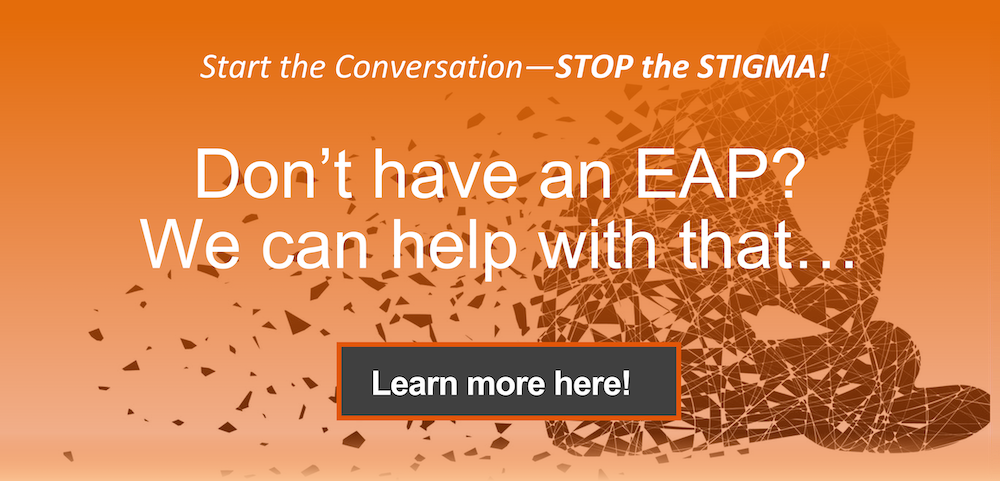Employee Assistance Programs (EAPs) are a cornerstone of modern workplace wellness strategies, offering confidential support for a range of personal and work-related challenges. By providing access to counseling, resources, and referrals, EAPs empower employees to address issues proactively, leading to improved well-being and job performance.
For employers, the benefits are equally compelling. Studies indicate that EAPs can lead to reduced absenteeism, lower healthcare costs, and enhanced productivity. For instance, research has shown that for every dollar invested in an EAP, employers may see a return of up to $3 in improved employee functioning and reduced work disruptions.
Moreover, EAPs contribute to a positive organizational culture by demonstrating a commitment to employee well-being. This commitment not only aids in employee retention but also enhances the company’s reputation as a supportive and caring employer.
However, the effectiveness of an EAP isn’t solely determined by its presence but also by its structure, particularly the number of sessions or visits it offers. The adequacy of these sessions plays a crucial role in addressing the diverse needs of employees, ensuring that they receive the appropriate level of support to navigate their challenges effectively.
What the Number of Visits Really Means
The number of counseling visits included in an Employee Assistance Program might seem like a technical detail, but it has real-world implications for both employees and organizations. Whether an employee is navigating a short-term challenge or managing a long-term condition, the number of sessions available can significantly influence the outcome.
Short-term counseling models are generally well-suited for specific, situational stressors. For example, an employee facing a temporary conflict with a colleague or experiencing the immediate aftermath of a family emergency might benefit from just a few sessions. In these cases, the goal is typically stabilization by providing immediate support, coping tools, and, when needed, a referral to longer-term resources.
But not every issue resolves quickly. Employees sometimes turn to EAPs for support with more complex or persistent concerns like anxiety, depression, grief, relationship strain, or addiction.
These aren’t problems that disappear after two or three visits. In fact, the American Psychological Association notes that, on average, 15 to 20 sessions are required for 50 percent of patients to experience recovery as measured by self-reported symptom measure.
When the number of available visits is too limited, employees may find themselves prematurely cut off from care. Even worse, they may never get past the surface level, leaving them feeling discouraged, unsupported, or forced to seek external care on their own, often without guidance on navigating insurance or availability. That can be a breaking point for employees already under strain.
From an organizational standpoint, this matters. When EAP session limits are misaligned with employee needs, the program’s effectiveness can suffer, along with its perceived value. Employees may view it as a “check-the-box” benefit rather than meaningful support, especially if their experience ends in frustration or confusion.
Consequences of Getting it Wrong
When EAP visit limits fall short of employee needs, the ripple effects go far beyond the individual.
The cost of unfinished care
Cutting off access too early often means that underlying issues go unaddressed. An employee who begins therapy for anxiety or burnout might make some progress in a few sessions, only to be forced to stop before any real change takes hold.
This can lead to:
- Presenteeism: showing up to work physically, but mentally checked out
- Increased absenteeism: stress-related sick days or extended leaves
- Decline in morale: not just for the individual, but for their team
Employees who feel unsupported may also hesitate to return to therapy, especially if the process of finding new care is confusing or cost-prohibitive.
Perception matters. Offering a benefit isn’t the same as delivering meaningful support. When employees feel that mental health resources are limited or superficial, it can erode trust in leadership and company culture.
How Employers Are Rethinking Session Limits
While many organizations still default to fixed session caps, others are exploring more flexible, responsive models, often without significantly increasing costs.
Flexible Models in Practice
Some employers are adopting tiered or needs-based approaches, where the number of visits depends on the issue’s severity or the employee’s prior usage. This can include:
- An initial allotment of 4–6 sessions, with the option to extend based on clinician recommendation
- Follow-up check-ins after EAP services conclude, helping employees transition to longer-term care
- Access to virtual counseling platforms that reduce logistical and financial barriers
These models recognize a simple truth: mental health needs vary, and meaningful progress often requires more than a fixed number of visits. Flexible approaches not only improve the chances of successful outcomes, but they also demonstrate a deeper organizational commitment to employee well-being.
Research supports this shift. Industry data shows that brief counseling, when offered through responsive and well-structured EAPs, is linked to measurable improvements in employee functioning, life satisfaction, and workplace performance.
smart use of Existing Resources
Organizations don’t always need to spend more; they need to spend smarter. Options include:
- Partnering with EAP providers who offer bundled services, such as financial counseling or legal advice, that free up clinical resources
- Offering peer support or coaching options for low-acuity concerns
- Training managers to guide employees toward the right level of care from the start
By reframing EAPs not as a fixed “three-visit benefit,” but as part of a broader mental health strategy, employers can better support their teams while keeping costs predictable.
3 Important Questions Leaders Should Be Asking
Session limits are a reflection of organizational priorities. Leaders who want their EAPs to make a real impact need to look beyond utilization rates and ask deeper questions about access, outcomes, and communication.
1. Are our visit limits aligned with actual employee needs?
Many organizations default to arbitrary session caps without fully considering the types of issues employees are facing. A three or four-session limit may be sufficient for a one-time crisis, but far less effective for ongoing challenges like grief, caregiving stress, or depression.
Leaders should review anonymized data to understand the most common reasons employees seek help and whether their EAP model supports meaningful resolution.
2. Are we measuring outcomes, or just usage?
High utilization rates may look good on paper, but they don’t reveal whether the support provided is actually helping.
Organizations should work with their EAP vendors to track post-session outcomes such as symptom improvement, workplace functioning, or successful transitions to long-term care. Without this data, it’s difficult to know whether the program is truly working.
3. do employees know how to access and extend care?
Even the best EAP can fall short if employees don’t know how to use it or if the process of extending care feels complicated or opaque. Leaders should ensure that communication around mental health benefits is clear, consistent, and stigma-free. That includes educating managers, reinforcing confidentiality, and guiding employees toward next steps if more support is needed.
The number of visits offered in an EAP might seem like a small detail, but it plays a significant role in shaping employee outcomes and perceptions. When session limits are aligned with real needs, EAPs become more than a benefit; they become a meaningful tool for supporting mental health, strengthening culture, and improving performance across the organization.
When you partner with Ulliance, our Life Advisor Consultants are always just a phone call away to teach ways to enhance your work/life balance and increase your happiness. The Ulliance Life Advisor Employee Assistance Program can help employees and employers come closer to a state of total well-being.
Investing in the right EAP or Wellness Program to support your employees will help them and help you. Visit https://ulliance.com/ or call 866-648-8326.
The Ulliance Employee Assistance Program can address the
following issues:
• Stress about work or job performance
• Crisis in the workplace
• Conflict resolution at work or in one’s personal life
• Marital or relationship problems
• Child or elder care concerns
• Financial worries
• Mental health problems
• Alcohol/substance abuse
• Grief
• Interpersonal conflicts
• AND MORE!
References:
How Your Employee Assistance Program Supports Mental Health; Woodruff Sawyer
https://woodruffsawyer.com/insights/eap-supports-mental-health
Investing in treatment for depression and anxiety leads to fourfold return; World Health Organization; World Health Organization
https://www.who.int/news/item/13-04-2016-investing-in-treatment-for-depression-and-anxiety-leads-to-fourfold-return
Managing Employee Assistance Programs: A Comprehensive Toolkit; Society for Human Resource Management
https://www.shrm.org/topics-tools/tools/toolkits/managing-employee-assistance-programs-eaps
The Effect of Employee Assistance Plan Benefits on the Use of Outpatient Behavioral Health Services; National Center for Biotechnology Information; Matthis M. et al.
https://pmc.ncbi.nlm.nih.gov/articles/PMC3081606/



